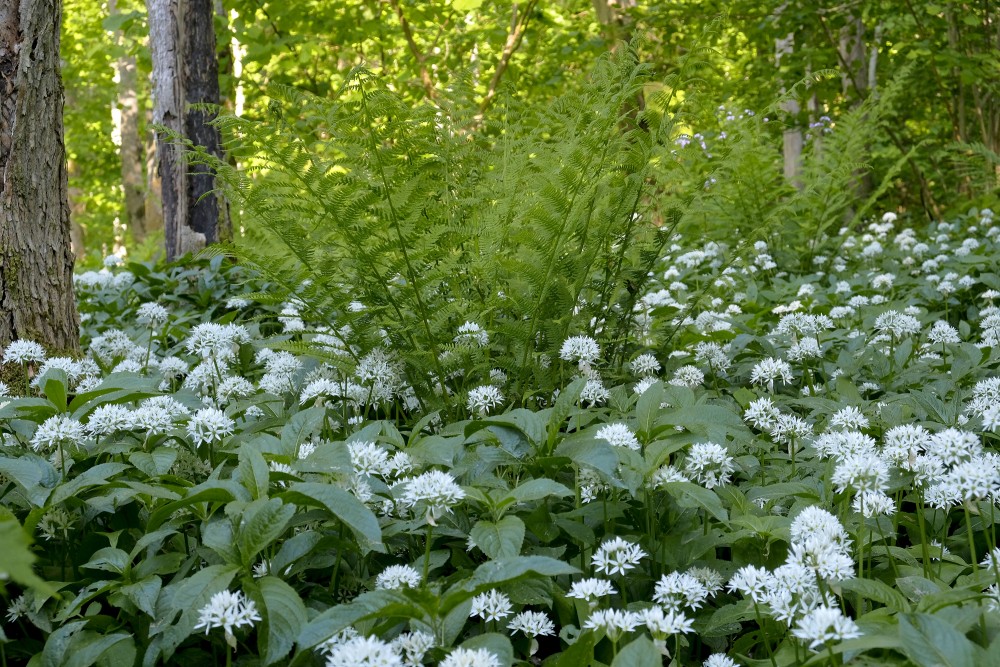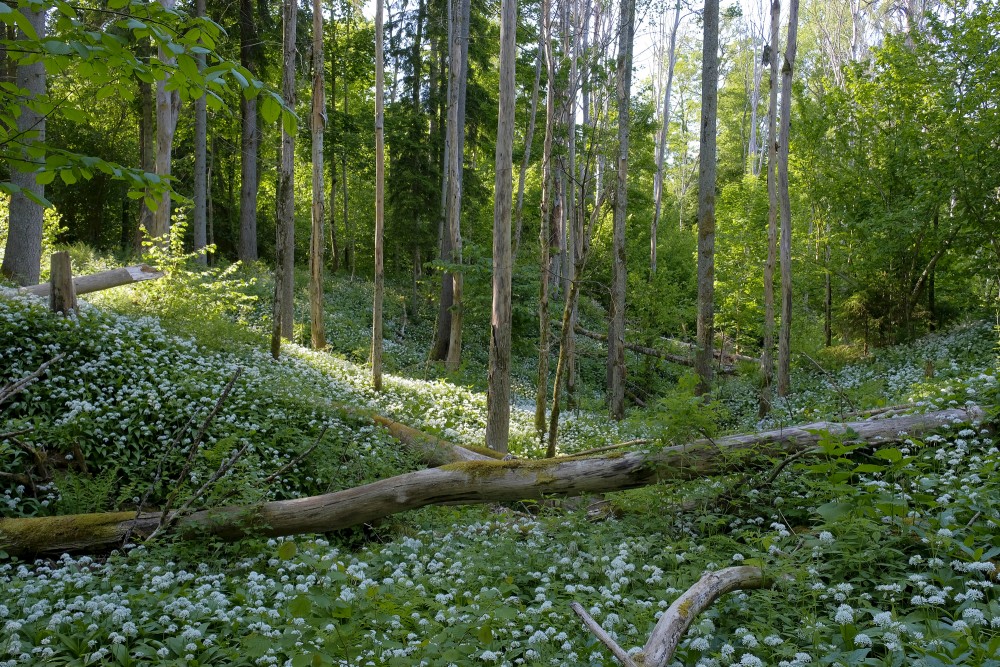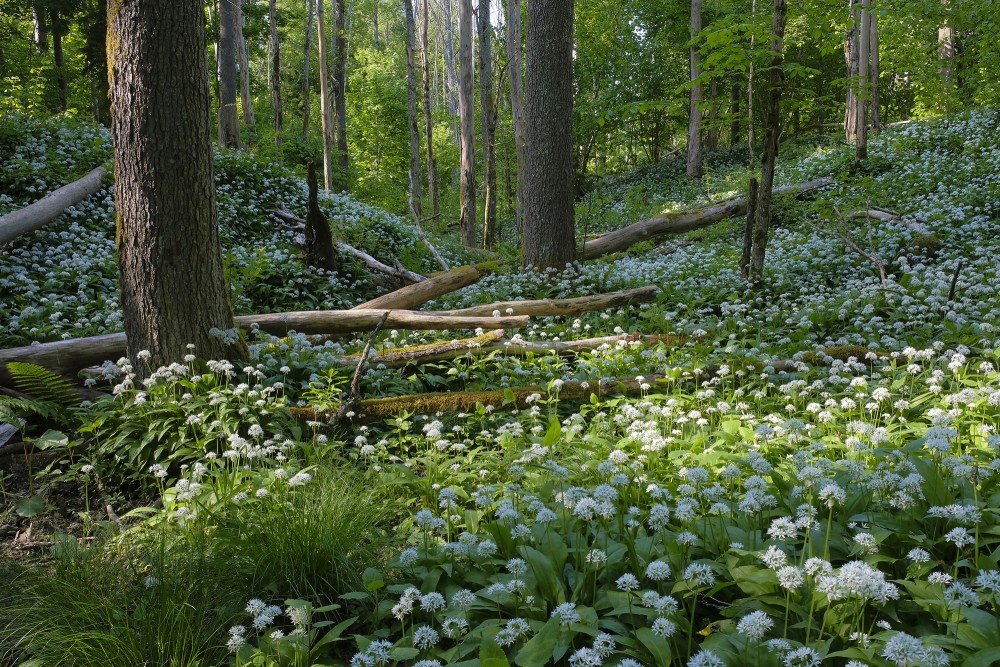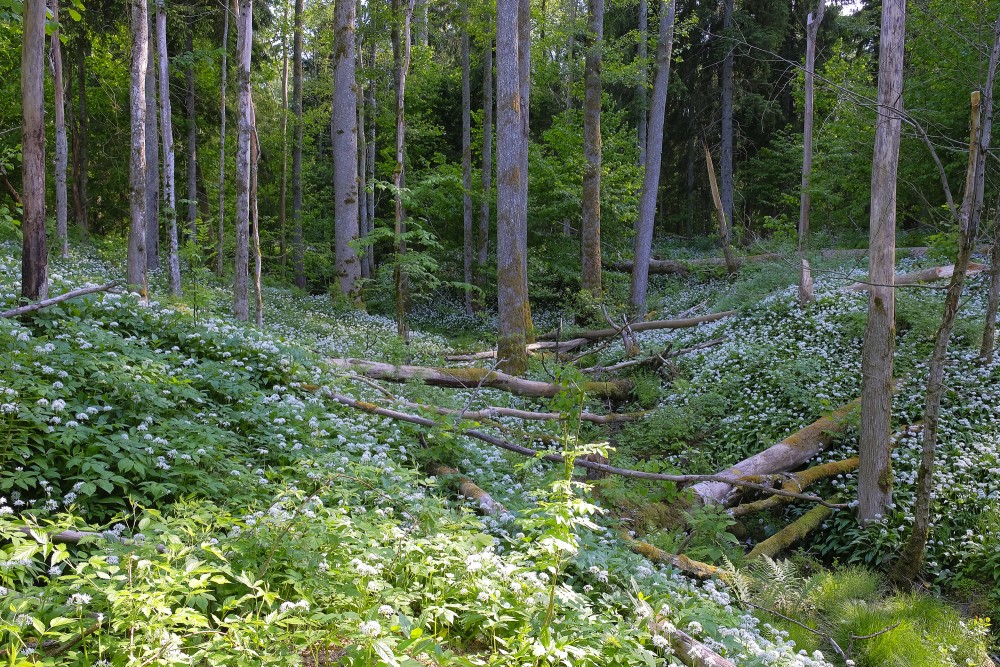Allium ursinum (Wild garlic)
Allium ursinum, known as wild garlic, ramsons, cowleekes, cows's leek, cowleek, buckrams, broad-leaved garlic, wood garlic, bear leek, Eurasian wild garlic or bear's garlic, is a bulbous perennial flowering plant in the amaryllis family Amaryllidaceae. It is native to Europe and Asia, where it grows in moist woodland. It is a wild relative of onion and garlic, all belonging to the same genus, Allium. There are two recognized subspecies: A. ursinum subsp. ursinum and A. ursinum subsp. ucrainicum.
| Allium ursinum | |
| Kingdom: | Plantae |
| Clade: | Tracheophytes |
| Clade: | Angiosperms |
| Clade: | Monocots |
| Order: | Asparagales |
| Family: | Amaryllidaceae |
| Subfamily: | Allioideae |
| Genus: | Allium |
| Species: | A. ursinum |
Description
Allium ursinum is a bulbous, perennial herbaceous monocot, that reproduces primarily by seed. The narrow bulbs are formed from a single leaf base and produce bright green entire, elliptical leaves up to 25 cm (9.8 in) long x 7 cm (2.8 in) wide with a petiole up to 20 cm (7.9 in) long. The inflorescence is an umbel of six to 20 white flowers, lacking the bulbils produced by some other Allium species such as Allium vineale (crow garlic) and Allium oleraceum (field garlic). The flowers are star-like with six white tepals, about 16–20 mm (0.63–0.79 in) in diameter, with stamens shorter than the perianth.
It flowers in the British Isles from April to June, starting before deciduous trees leaf in the spring. The flower stem is triangular in cross-section and the leaves are broadly lanceolate, similar to those of the toxic lily of the valley (Convallaria majalis).
Distribution
It is native to temperate regions of Europe, from Ireland east to the Caucasus. It is common in much of the lowlands of the British Isles with the exception of the far north of Scotland, Orkney, Shetland, and the Channel Islands. The ursinum subspecies is found in western and central Europe, while the ucrainicum subspecies is found in the east and southeast.
Herbal remedy
Allium ursinum has been credited with many medicinal qualities and is a popular homeopathic ingredient. It is often used for treating cardiovascular, respiratory, and digestive problems, as well as for the sterilisation of wounds.
Various minerals are found in much higher amounts in Allium ursinum than in clove garlic. It is sometimes called the “magnesium king” of plants because of the high levels of this mineral found in the leaves.
Habitat
It grows in deciduous woodlands with moist soils, preferring slightly acidic conditions. In the British Isles, colonies are frequently associated with bluebells (Hyacinthoides non-scripta), especially in ancient woodland. It is considered to be an ancient woodland indicator species.
en.wikipedia.org





